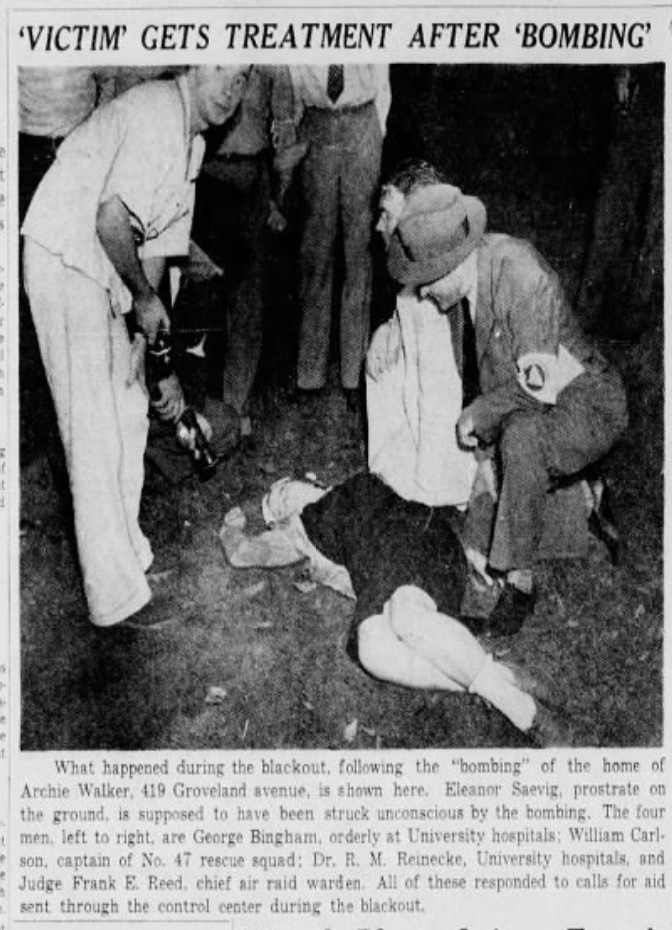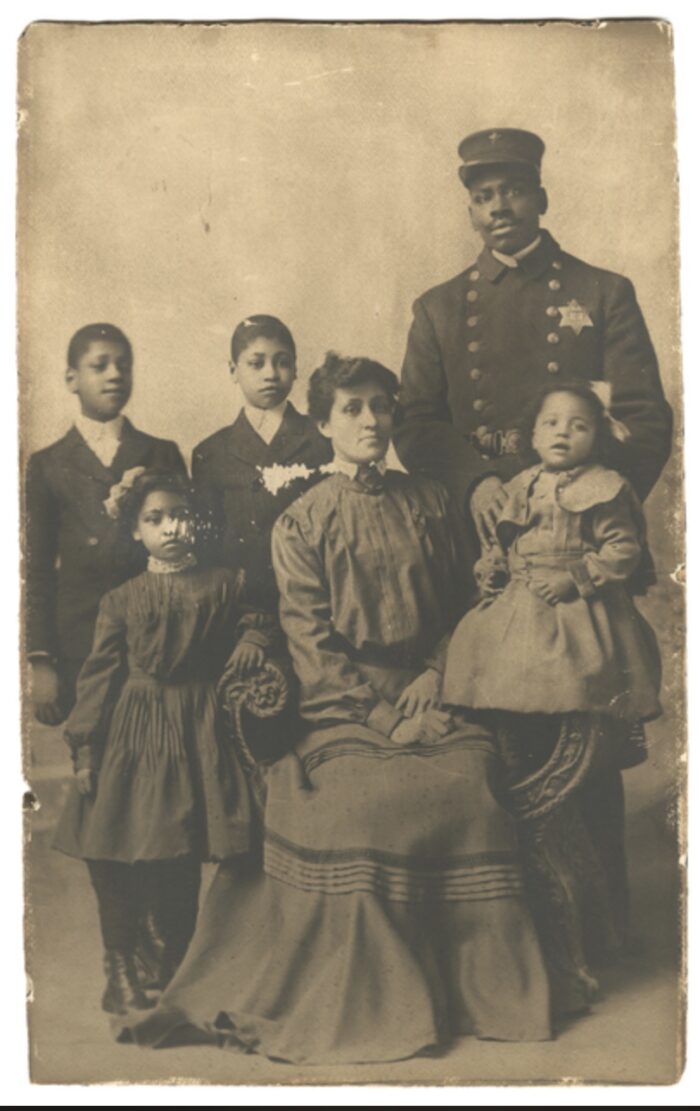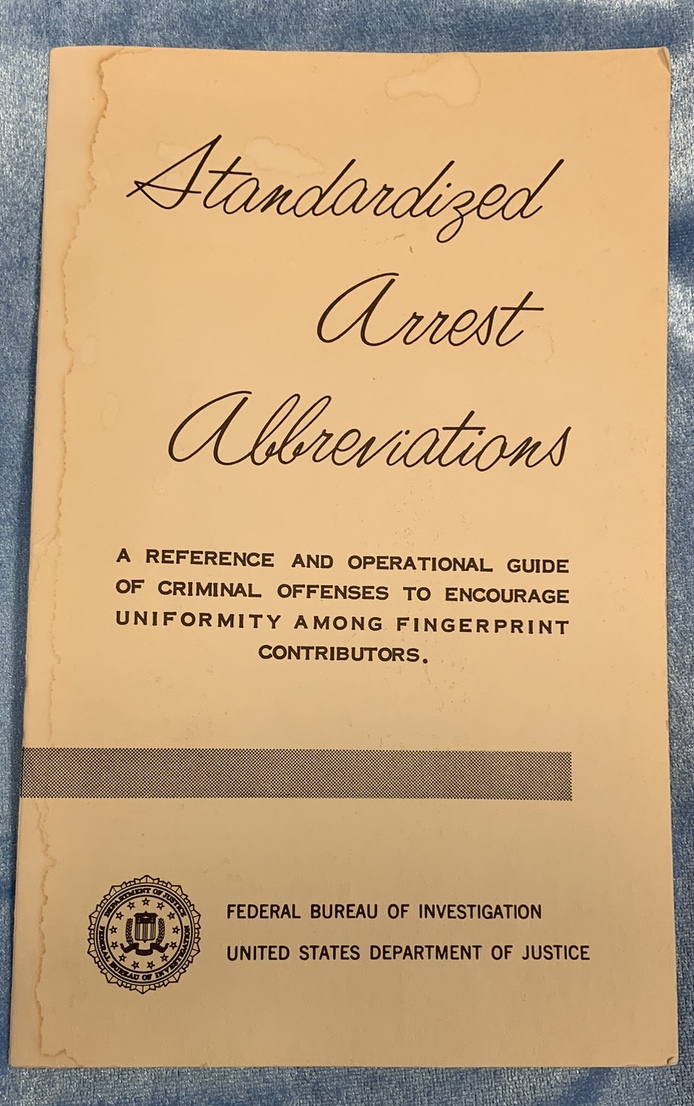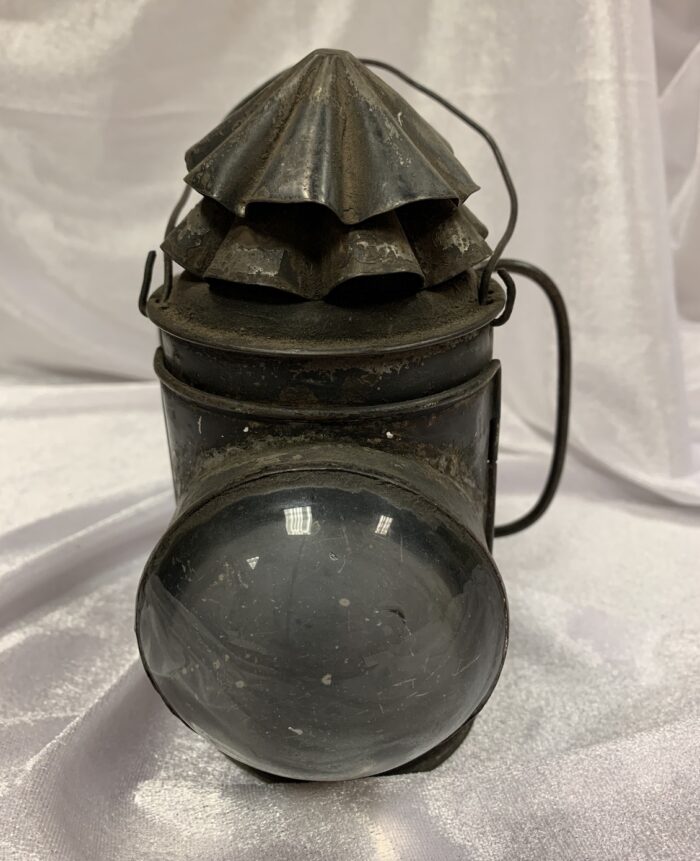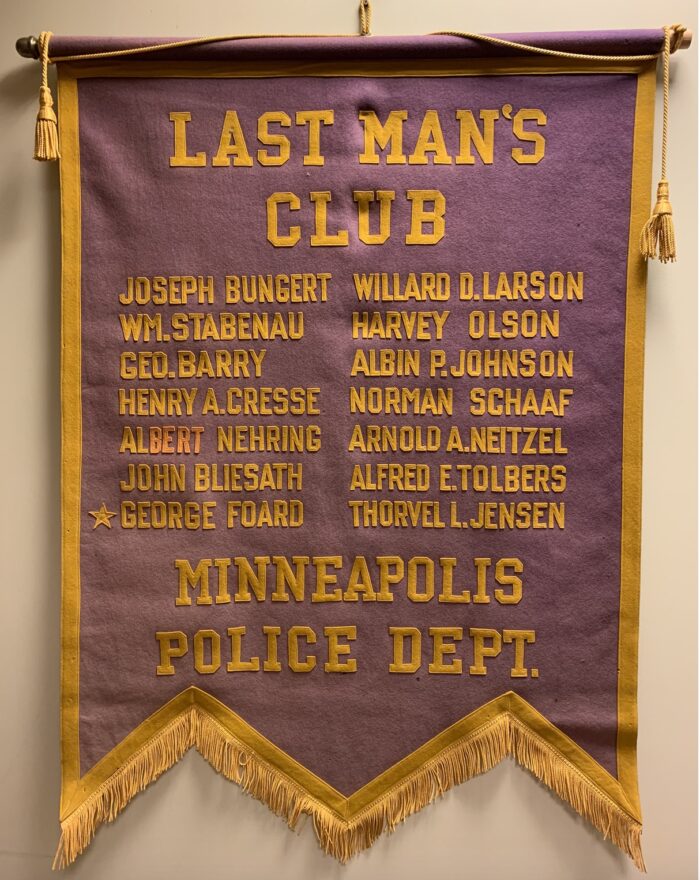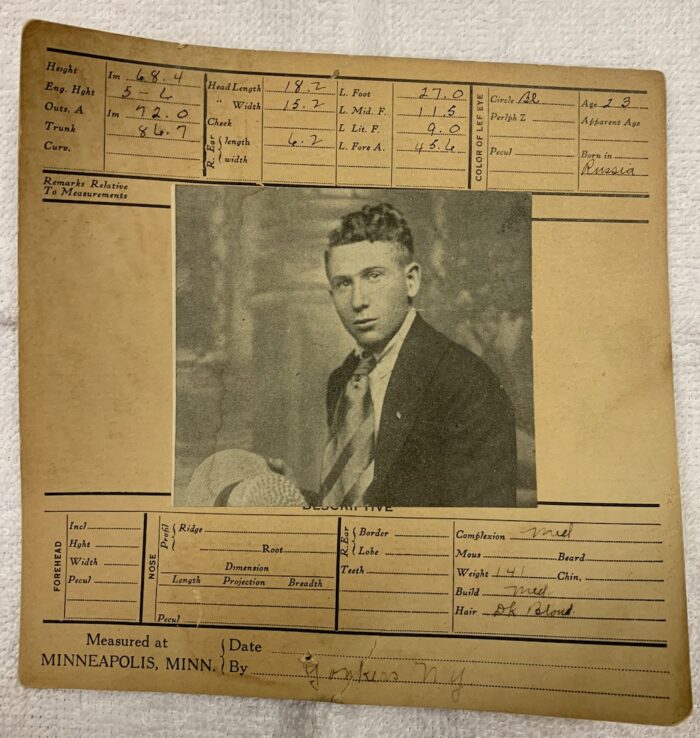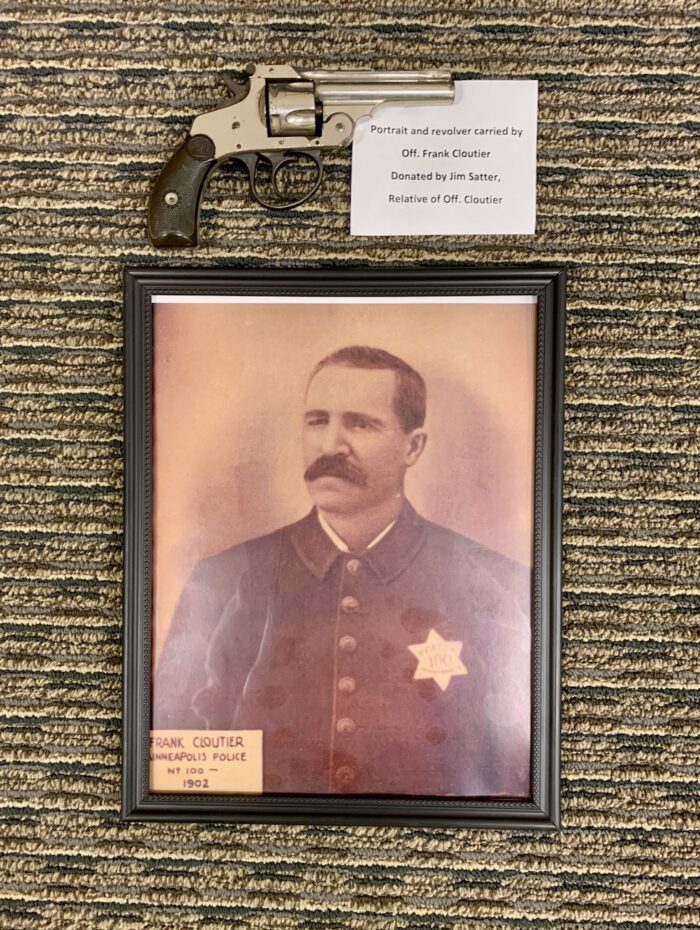We are grateful to you.
Latest Posts
air raid drill of September 11, 1942
In 1942, the Minneapolis Police Department built and configured the Air Raid Control Center which was subsequently staffed and managed by municipal employees.
The Air Raid Control Center was in full use during the city-wide drill of September 11, 1942. The photograph above depicts a victim from a simulated bombing scenario.
Here is the actual Blackout Procedure Manual used by then Captain (formerly Chief) Frank Forestal in 1942.
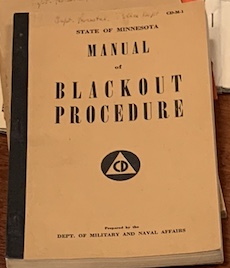
Photograph above from the Minneapolis StarTribune of September 11, 1942
our earliest badge is worn again today
The very first style of the Minneapolis Police badge was a six-pointed star.
You can see it worn by Officer Henry G. Thompson who is pictured above in uniform along with his family.
During the 1900-1910s, Minneapolis Police Officers wore the first version of a shield-shaped badge. This version was distinguished by the over-sized letters MSPE.
As the twentieth century unfolded, the shield-shaped badge remained the standard, first in a version with an etched eagle and later in a version with a sculpted eagle.

In 2017, in honor of the Minneapolis Police Department’s 150th Anniversary, officers were given the option to wear the six-pointed star again.
If you keep an eye out you will notice many officers wearing this historic style.

Badges from the Collection of the Museum
Photographs courtesy of the Minneapolis Police Department
paper ephemera
Every organization has its share of paper ephemera – those programs, booklets, tickets, receipts, advertisements, instructions, flyers, training materials, and other bits and pieces which comprise the fragments of everyday life.
Here is an interesting piece from our collection.
Like a lot of paper ephemera, it was intended to serve only a short-term purpose, in this case to help familiarize law enforcement with a standard set of abbreviations to use when fingerprinting.
This booklet is undated but we have a clue within it to help us connect it to its time period.
On page ten of the booklet, we see a reference to the Labor Management Reporting and Disclosure Act of 1959.
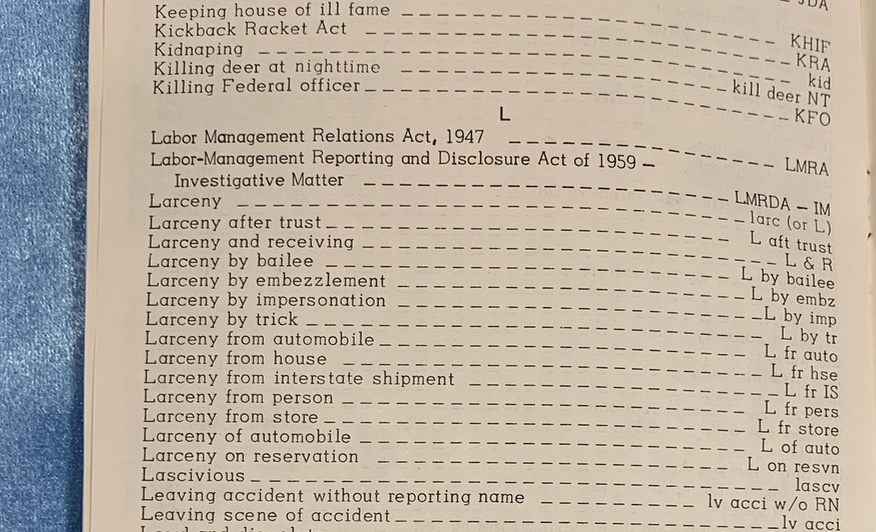
With that single reference, we can state with confidence that this booklet was printed in 1959 or later.
dark lanterns
Here is a dark lantern from the museum’s collection.
Dark lanterns were standard equipment for watchmen, military and police in the late 1800s.
While regular lanterns shed light from the time they are lit until they are extinguished, dark lanterns are made with doors and other devices to allow or block the shedding of light while remaining lit.
According to the Dark Lantern Tales website:
“Typical dark lanterns were about the size and shape of a small modern thermos bottle, and had a fount for oil in the bottom. A cap with a wick (or wicks) was mounted directly to the top of this reservoir, and in most models the cap also served as a port to fill it. In the cylindrical body of the lantern, a shutter could be rotated to block light from coming through a large “Bull’s Eye” lens on the front. At the top of the lantern was a vent that allowed exhaust from the flame to exit but retain the light. These distinctive vents were usually made with two metal disks that were stamped into flutes that taper to the middle. The effect is sort of a ruffled top to the whole device. At the back of the lantern were wire handles to protect the user from the hot sides (policemen and watchmen kept them lit for upwards of six hours while on patrol), and usually a clip to hang the lantern on the user’s belt. There are anecdotes that describe patrolmen keeping a lit lantern on their belt beneath their great coat to stay warm in very cold weather.”
To learn more about dark lanterns, visit Dark Lantern Tales

a club for wwi veterans
Here is a banner from the museum’s collection which commemorates the “Last Man’s Club”
We reached out to Retired Minneapolis Police Sergeant David Niebur to learn more about this club from his extensive research on the history of the Minneapolis Police Department.
Retired Sergeant Niebur shared that the concept of the “Last Man’s Club” originated with World War One Veterans. Members were men who had served in the war, survived, and were now living back home and engaged in a variety of occupations.
The Minneapolis Police “Last Man’s Club” was founded in 1936 by fourteen World War One Veterans of the Minnehaha Station.
It was a unique group because it was the only “Last Man’s Club” in the country that was comprised entirely of police officers.
The Minneapolis Police “Last Man’s Club” held an annual meeting for many years until most of its members had passed away.
a bertillon card from our collection
You may recall our previous post on the Bertillon System.
The Bertillon System was invented by French criminologist Alphonse Bertillon in 1879. It was a technique for describing individuals on the basis of a catalogue of physical measurements including standing height, sitting height (length of trunk and head), distance between fingertips with arms outstretched, amongst other characteristics.
For thirty years, the Bertillon System was generally accepted as the leading method of criminal identification. With the advent of fingerprinting, use of the Bertillon System eventually began to decline.
We are pleased to share with you the front (above) and back (below) of one of the Bertillon cards in our collection.
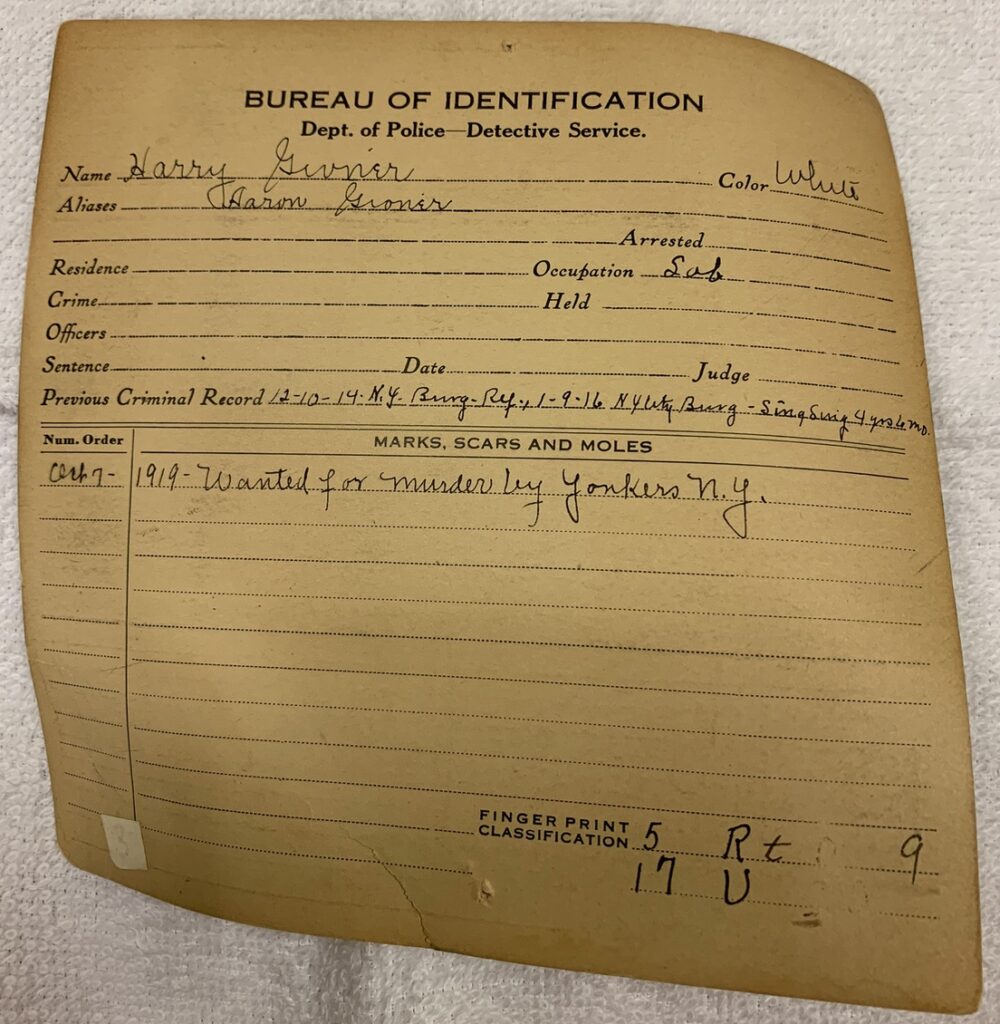
happy retirement!
Indigo (Indy)
Breed: Percheron/Apdx
Hands: 15.3
15 Years Old
Acquired by MPD: 2016
Recently, the Minneapolis Mounted Police Foundation shared the news of the retirement of one of its equine partners Indy (Indigo).
Indy is a truly special horse and she is a favorite of many children and adults alike.
In honor of Indy’s retirement, we are sharing this set of spurs from the museum’s collection. These were worn by Minneapolis Mounted Police Officers in the late 1800s.

Indy is enjoying her retirement on a ranch with green pastures and trail access.
A sincere thank you to Indy for her service and our best wishes to her for a happy retirement!
Photo of Indy courtesy of the Minneapolis Mounted Police Foundation
from our collection
Here is a front-break Harrington and Richardson revolver from the museum’s collection.
It was used on the job by Minneapolis Police Officer Frank Cloutier, Badge Number 100.
He is pictured here in a 1902 Minneapolis Police Department photograph.
The revolver and the portrait of Officer Cloutier were donated to the museum by Jim Satter, a relative of Officer Cloutier.
a siren from our collection
This is a heavy metal siren used on Minneapolis Police Department squad cars in the 1960s through approximately 1972.
It was made by the Federal Sign and Signal Corporation of Blue Island, Illinois. The Model is the 66G with a serial number of 2026. It is a 12 Volt model and you can see that it retains part of its cord.
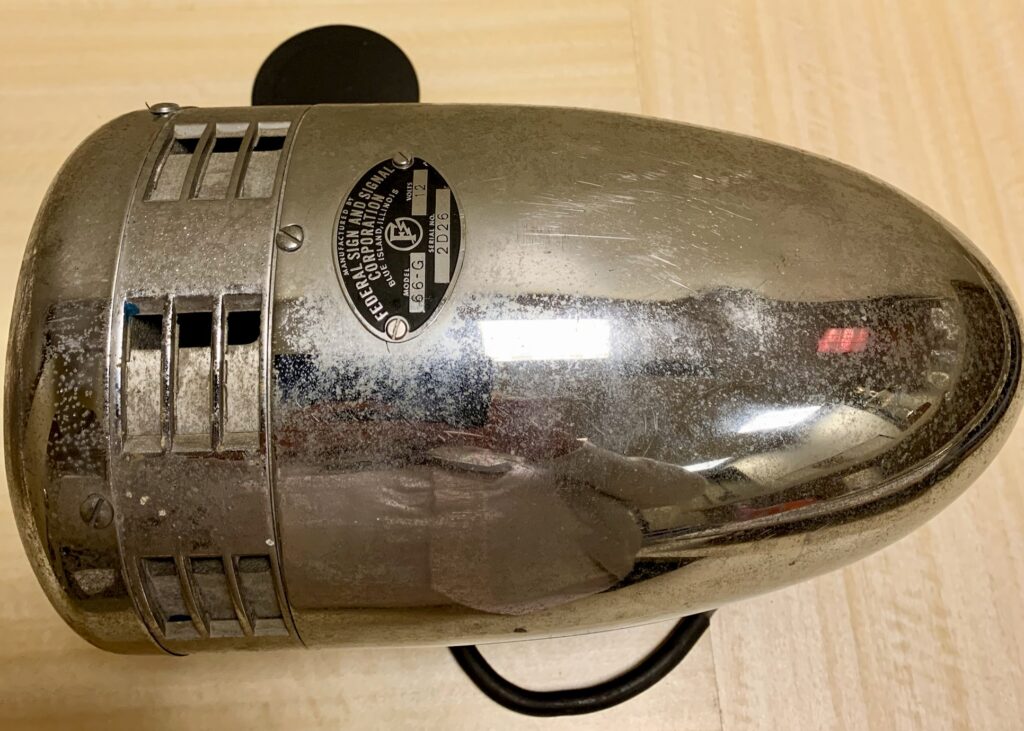
We visited recently with a group of retired Minneapolis Police Officers to learn more about this siren.
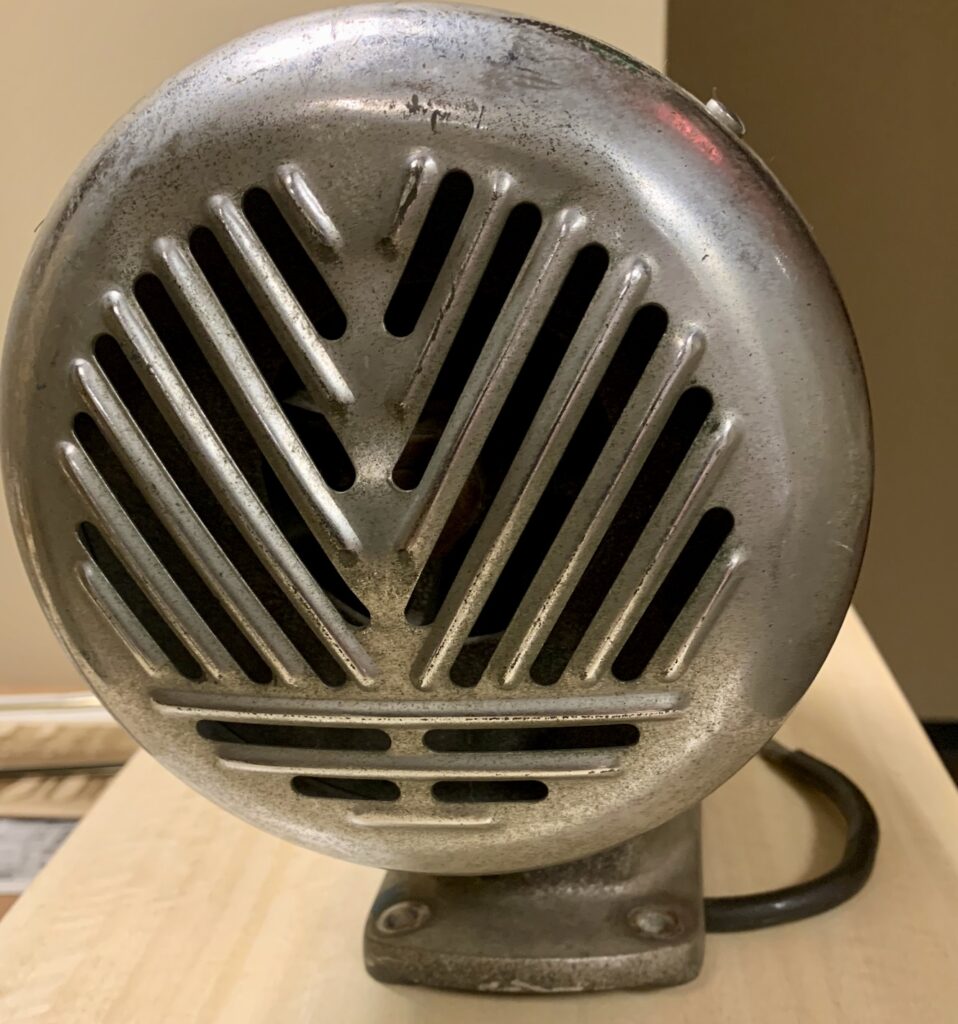
We learned that in the winter, even though it had a protective hood, it was prone to freezing up. Officers knew that if they turned the siren on and no sound emanated, it meant that the siren was packed with ice inside.
When this happened, the passenger-side officer would reach out and strike at the siren with a nightstick in an attempt to knock the ice out and get the siren to work. You can see a dent which was caused by this nightstick routine in the photograph below.

Summer or winter, when the siren was turned on it caused the squad car headlights to dim.
The siren was originally mounted on the front fender and eventually, as you see in this photograph of a 1969 Ford squad car, an electric siren was also mounted to the lightbar of the roof of the squad car between with the flashing lights.
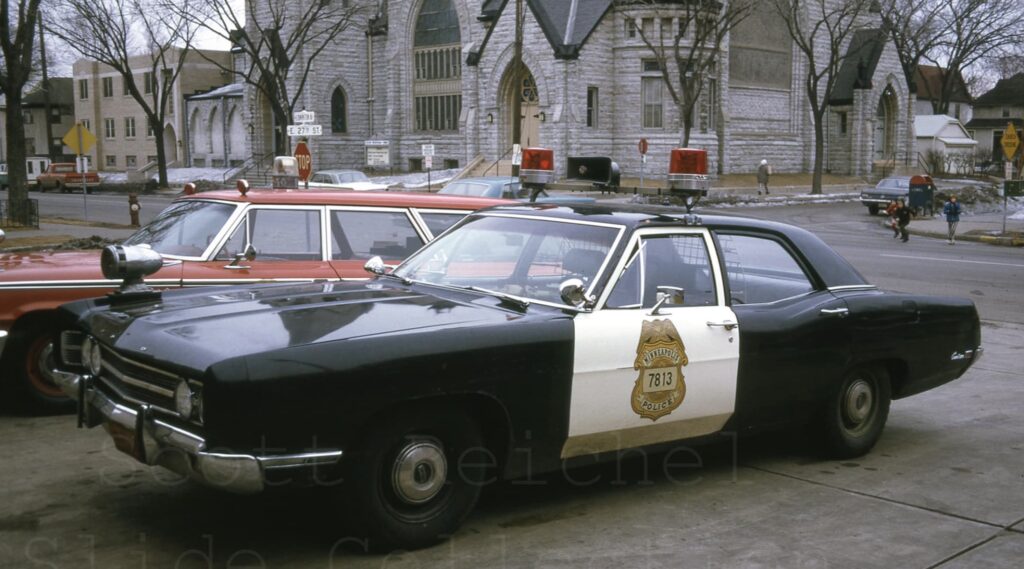
When the Model 66G was decommissioned sometime after 1972, the sirens were put into 55 gallon drums and sent to the scrapyard.
We are fortunate to have one of the remaining Model 66Gs in our museum collection.
A warm thank you to the Retired Minneapolis Police Officers who provided their stories of the Model 66G.
Photograph of the 1969 Ford Squad Car courtesy of Scott Reichel.

